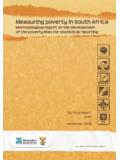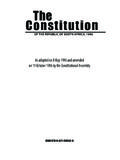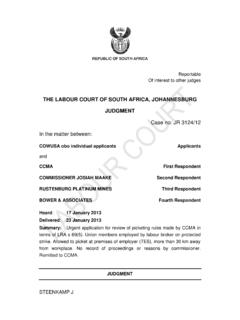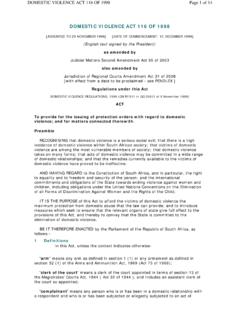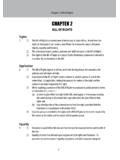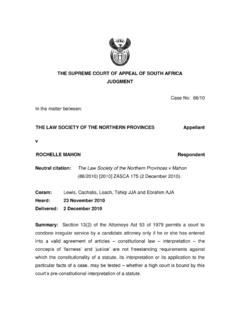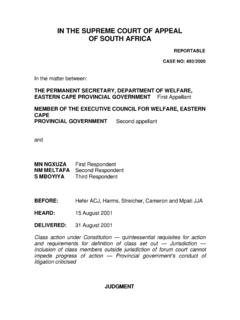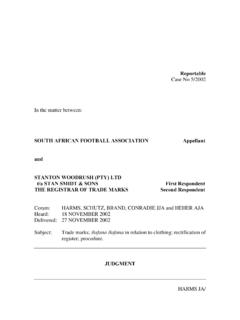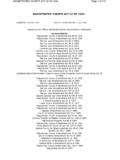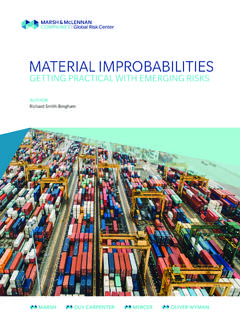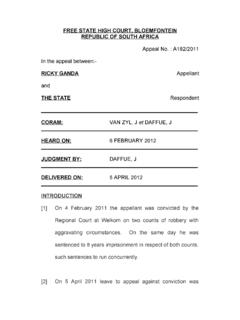Transcription of THE SUPREME COURT OF APPEAL OF SOUTH AFRICA …
1 THE SUPREME COURT OF APPEAL OF SOUTH AFRICA . JUDGMENT. Case no: 147/2011. In the matter between MUSUSUMELI SAMUEL MAEMU Appellant and THE STATE Respondent Neutral citation: Maemu v S (147/11) [2011] ZASCA 175 (29 September 2011). Coram: HEHER, CACHALIA, SHONGWE, THERON and MAJIEDT JJA. Heard: 18 August 2011. Delivered: 29 September 2011. Summary: Criminal Procedure Evidence cautionary rule in respect of young child proof beyond reasonable doubt required having considered the totality of evidence each case to be decided on its own merit Corroboration is not a sine qua non. In casu the medical evidence is inconclusive it does not establish that there was penetration.
2 2. ORDER. _____. On APPEAL from: Limpopo High COURT (Thohoyandou) (Hetisani J sitting as COURT of first instance): 1. The APPEAL is upheld. 2. The conviction and sentence are set aside. _____. JUDGMENT. _____. SHONGWE JA (HEHER, CACHALIA, THERON, MAJIEDT JJA concurring). [1] This APPEAL originates from the regional COURT of the Northern Province, now called Limpopo. The appellant was convicted for the rape of a little girl, 6 years of age. In terms of s 52 (1)(b)(i) of the Criminal Law Amendment Act 105 of 1997 the matter was referred to the Limpopo High COURT for sentence. He was sentenced to life imprisonment.
3 Leave to APPEAL having been refused, this matter is before us with leave of this COURT . [2] The conviction was attacked essentially on the following grounds: (a) ex facie the record, the proceedings in the regional COURT were not in accordance with justice;. (b) the appellant was refused an opportunity to address the COURT below on his application to lead new and further evidence, namely that of the investigating officer and one Lillian, who is alleged to have witnessed the appellant chasing or grabbing the complainant; (c) the COURT below should have remitted the case to the regional COURT for the reconstruction of the record as the evidence in chief of the appellant 3.
4 Was missing; (d) the complainant was not properly sworn in and therefore her testimony should have been set aside; and (e) the COURT a quo failed to apply the cautionary rule as the complainant was a single witness. [3] The respondent (State) conceded that the record was incomplete and that certain evidence was missing. However, the parties accepted that the APPEAL could be argued on the record as it stood and the matter proceeded on that basis. [4] On the merits, the little girl (M) testified that she visited the appellant's place, as she usually did, in September 2001. It would appear that M's family and the appellant's family are related and apparently knew each other very well.
5 As she was walking home, after playing with the other children, she noticed the appellant who chased or grabbed her and dragged her into the house where he undressed her and himself and inserted his penis into [her] vagina'. He gave her some money and oranges. She then went to buy Simba chips. On her arrival at home, her elder sister, asked her where she got the money from, as she had 20 cents and oranges at that stage. She related to her sister how she got the money. [5] D, M's aunt, testified that she had gone to town earlier, and when she returned in the evening she overheard the two girls talking about a secret and as a result she confronted the sister regarding what she overheard.
6 The sister then told her about M's encounter with the appellant during the day, this was after D had threatened to beat her with a belt, if she was not going to tell her. D immediately confronted M who started talking but before she completed the whole episode, started crying. The gist of her evidence is that D informed her brother, who 4. discouraged her from reporting the incident to the police because he thought this might ruin the relationship between their families. D also telephonically reported to M's mother, who works far from home, but did manage to come home a few days after this incident.
7 What is rather strange is that, as an aunt who lives with M on a daily basis, she did not bother to examine her private parts to establish, at least, if the child was injured or actually interfered with sexually. [6] A number of other witnesses gave evidence, however their evidence does not take this matter any further, save for the medical evidence which was contained in a J88 (the medical report). This report, completed by a Dr Jacobs who no longer works at the hospital, was presented and read out in COURT by Dr Kibuke. What is significant is that the J88, under the subheading clinical findings, reflects that there was a small cleft on the upper edge of the vaginal wall and records that there was possible penetration with an object.
8 Dr Kibuke further testified that there is not much evidence to actually certify a penetration' and that a cleft could have been an anatomical deformity. It must be remembered that the alleged rape took place in September 2001 and the complainant was only medically examined on the 28. November 2001 a period of about two months later. [7] The trial COURT found, correctly so in my view, that M was a competent witness and that she was properly admonished in terms of s 164 of the Criminal Procedure Act 51 of 1977. It also found that in regard to the alleged rape she was a single witness and that it could convict on the evidence of a single witness provided the evidence was satisfactory.
9 The trial COURT simply omitted to mention that the evidence must be satisfactory in every material respect' (See R v Mokoena 1932 OPD 79 at 5. 80). The appellant and his wife also testified. Essentially his defence was a total denial. His wife could not take the matter any further as she was not present when this incident occurred. [8] The ground relied upon of whether or not the appellant was refused an opportunity to lead new and further evidence by the COURT a quo, was ill-conceived because the record does not show any application or request having been made by the appellant. What the record does show is that both the appellant's and the State's legal representatives were given an opportunity to address the COURT at the beginning of the proceedings in the COURT below.
10 It is therefore evident that the appellant's legal representative was given an opportunity to address the COURT below before it concluded that the proceedings were indeed in accordance with justice. [9] It is true that M did testify that one Lillian and other people saw her being chased or grabbed by the appellant, but neither Lillian nor any of the persons were called by the State. Their evidence, if indeed they were present, would have had a tremendous impact on the State's case. It is rather strange that people would standby and not assist a child being attacked in broad daylight. [10] The rape complained of was not reported to the police by the parents of M.
